
Avni Sharma
About the Author
Coin Blogger | Collector
Avni Sharma is the voice behind one of the internet’s most relatable and informative blogs on the most valuable pennies list and world coins. Her interest began when she inherited her grandfather’s penny collection.
What started as a personal project quickly turned into a public passion. Through her blog, Avni shares coin identification tips, collector guides, value breakdowns, and many other topics.
What You’ll Find in Her Blog:
- Information about Lincoln Wheat and Indian Head pennies
- Step-by-step guides on grading and evaluating coins
- Personal stories
- A list of valuable pennies by year
- Updates on market trends and coin value fluctuations
- Tools and apps that help modern collectors stay organized
Connect with Avni:



Introduction
Ever heard of a penny selling for $1.7 million?
That’s not a myth—it’s the market. Yes, it’s true—a single penny sold for $1.7 million.
That extraordinary coin is the 1943-D Bronze Lincoln Cent, considered the holy grail of U.S. pennies. It was accidentally struck at the Denver Mint on a bronze planchet (the copper alloy used in previous years) during a time when pennies were supposed to be made of zinc-coated steel to conserve copper for World War II.
Why it’s worth so much:
- Only one known example with the Denver “D” mint mark.
- Struck in error on a bronze planchet during the steel cent year.
- One of the most valuable Lincoln pennies list
- Authenticated and graded by PCGS as MS-64 Brown, in remarkable condition.
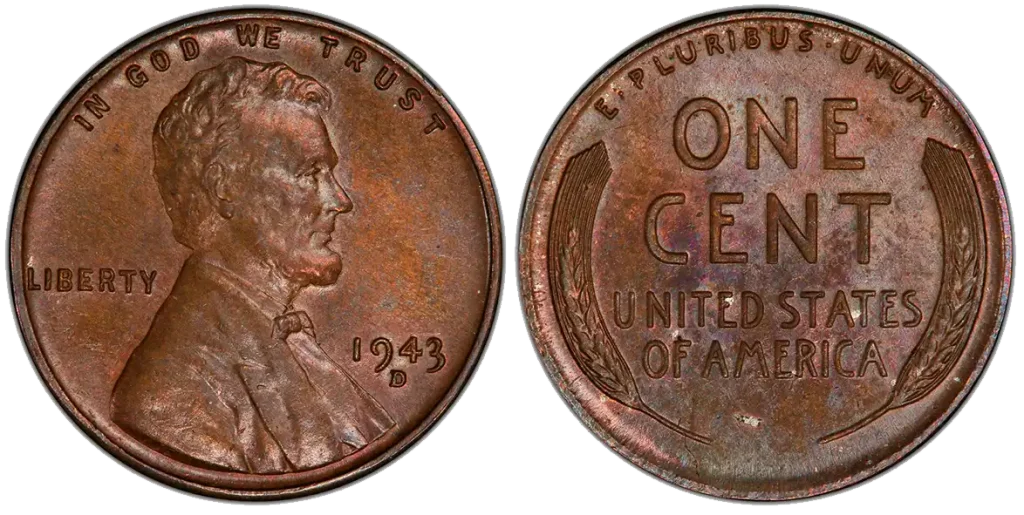
Other headline-making penny sales include:
- 1909-S VDB Lincoln Cent – sold for $117,500, another one from the list of valuable wheat pennies.
- 1958 Doubled Die Obverse – one of only three known, sold for over $336,000.
- 1944 Steel Cent – a WWII-era anomaly, reached $408,000 at auction.
- 1877 Indian Head Penny – a semi-key date, has sold for over $149,000 in top condition.
In this guide, we’ll uncover the key dates, mint marks, and minting mistakes that collectors dream of finding—and that could turn your next penny into a prize.
The Full List
| # | Coin | Key Detail | Record Value |
| 1 | 1943 Bronze Lincoln Cent | Struck in bronze instead of steel | MS-62: $1,700,000 |
| 2 | 1958 Doubled Die Obverse | Strong doubling on ‘LIBERTY’ and motto | MS-65 RD: $336,000 |
| 3 | 1909-S VDB Lincoln Cent | Low mintage with designer initials | MS-67 RD: $117,500 |
| 4 | 1944 Steel Cent | Wrong planchet error (steel after 1943) | MS-66: $408,000 |
| 5 | 1877 Indian Head Cent | Rarest date of the Indian Head series | MS-66 RB: $149,500 |
| 6 | 1922 No D Lincoln Cent | Only year with missing mint mark variety | MS-65: $92,000 |
| 7 | 1914-D Lincoln Cent | Scarce early-Denver issue, one from the most valuable wheat pennies list | MS-66 RD: $75,000 |
| 8 | 1943-S Bronze Lincoln Cent | Only a few struck in bronze from SF mint | AU-58: $282,000 |
| 9 | 1969-S Doubled Die Obverse | Strong doubling of date and motto | MS-64 RD: $126,500 |
| 10 | 1917 Doubled Die Obverse | Visible doubling in motto and date | MS-66: $48,000 |
| 11 | 1909-S Indian Head Cent | Final year of Indian Head, low mintage | MS-66: $97,750 |
| 12 | 1972 Doubled Die Obverse | Noticeable doubling in inscriptions | MS-66 RD: $14,400 |
| 13 | 1983 Doubled Die Reverse | Clear doubling on reverse elements | MS-65 RD: $7,050 |
| 14 | 1992 Close AM Lincoln Cent | Close spacing between A and M in AMERICA | MS-64 RD: $20,700 |
| 15 | 1999 Wide AM Lincoln Cent | Unusual wide spacing on reverse | MS-67 RD: $16,800 |
| 16 | 1984 Doubled Ear Lincoln | Doubled earlobe—very distinct variety | MS-66 RD: $6,600 |
| 17 | 1995 Doubled Die Obverse | Popular doubled variety, bold doubling | MS-65 RD: $5,875 |
| 18 | 1926-S Lincoln Cent | Low mintage and hard to find in high grade | MS-65 RD: $4,500 |
| 19 | 1910-S Lincoln Cent | Underrated low-mintage early S-mint coin | MS-66 RD: $3,800 |
| 20 | 1931-S Lincoln Cent | Depression-era rarity with low output | MS-65 RD: $3,100 |
Disclaimer: The values listed in this list of most valuable pennies are based on publicly recorded auction results and professional grading standards. Actual market prices may vary depending on a coin’s condition, authentication, demand, and specific variety. Always consult a certified numismatist or grading service before buying, selling, or appraising rare coins.
Why These Pennies Are Valuable
Understanding what drives the value of rare pieces from the list of most valuable wheat pennies comes down to three major factors: rarity, errors, and condition. Here’s how each plays a role:
Rarity
Some pennies were minted in extremely low numbers. This made them scarce from the start. Others may have had large mintages, but few survived in collectible condition.
Examples:
- 1909-S VDB – only 484,000 made.
- 1877 Indian Head Cent – lowest mintage of the entire series.
- 1931-S Lincoln Cent – limited production during the Great Depression.
The fewer the known coins, the higher the collector demand, price, and the position in the list of the most valuable pennies.
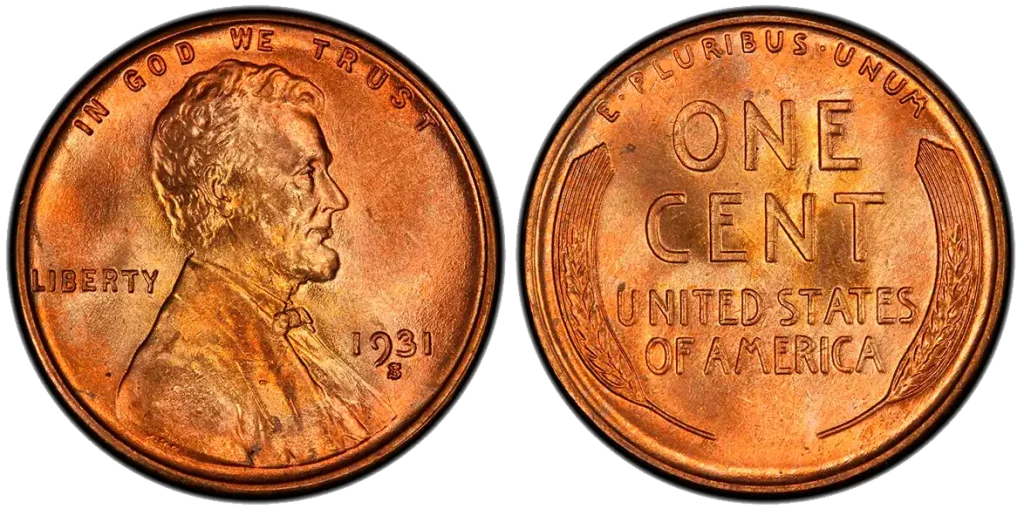
Errors
Coins struck with mistakes often become valuable collector items. These minting errors can range from subtle to dramatic and are often highly sought after due to their uniqueness.
Examples:
- 1958 Doubled Die Obverse – doubled inscriptions.
- 1943 Bronze Cent – wrong metal used during WWII steel era.
- 1992 Close AM – reverse design intended only for proofs.
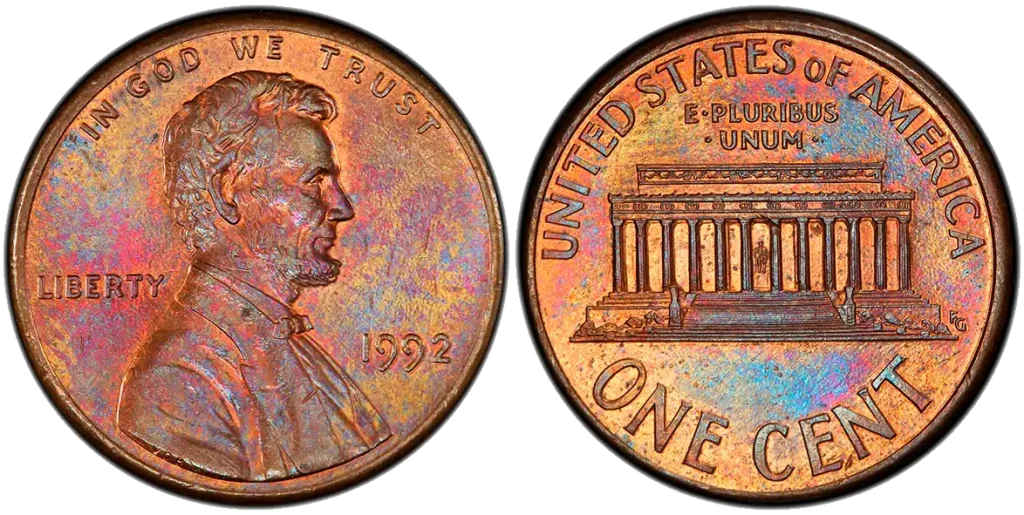
Condition (Grading Impact)
Coin value increases significantly with better condition. The grading scale (typically from Poor (P-1) to Mint State (MS-70)) helps determine a coin’s surface quality, luster, strike, and wear.
Examples from the list of all valuable pennies:
- A 1944 Steel Cent in MS-66 fetched over $400,000.
- The same coin in VF-20 might sell for just a few thousand.
The highest-grade coins in any category usually set record prices at auction.
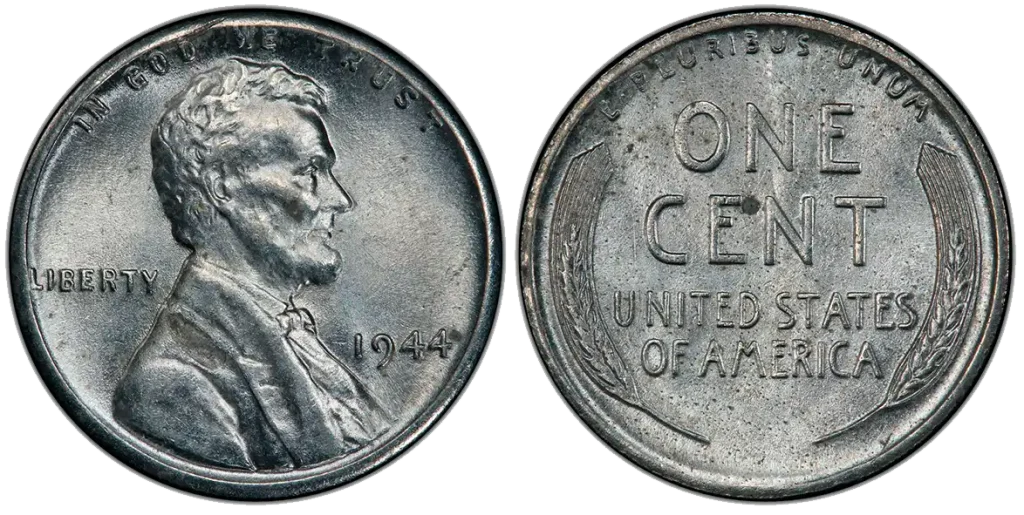
How to Identify Valuable Pennies
Not all old pennies are valuable—but the ones that are tend to have a mix of three things: historical significance, minting errors, and well-preserved condition. Here’s a breakdown of how to tell if the pennies in your collection could be worth serious money and belong to the list of pennies that are valuable:
Key Dates & Mint Marks
Some years and mint marks represent low mintage, first-year issues, or transitional designs. These pennies are often the most sought-after by collectors and investors alike.
What to check:
- The year: Compare it with a known list of rare dates.
- The mint mark: Look below the date on the obverse (front). “D” is Denver, “S” is San Francisco, and no mark means Philadelphia.
Most valuable pennies worth money list by year specifications:
- 1909-S VDB – First year of the Lincoln cent, extremely low mintage with designer initials on the reverse.
- 1914-D – Scarce early penny from the Denver Mint.
- 1922 No D – The only Lincoln cent year where some coins were struck without a mint mark by mistake.
- 1943 Bronze – A wartime error; these were supposed to be steel, not bronze.
- 1955 Doubled Die – One of the most dramatic and famous doubling errors ever released.
You may always use a trusted reference or app like Coin ID Scanner to verify date and mint mark rarity instantly.
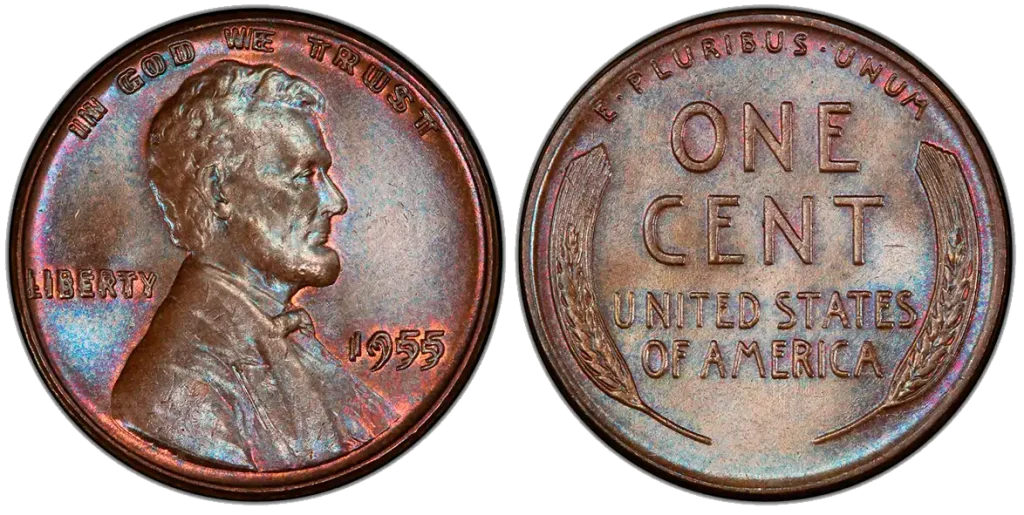
Error Detection
Mint errors often happen during high-speed production and may go unnoticed until collectors discover them. These flawed coins are considered highly collectible—sometimes even more than key dates. That’s why you will always find them in any most valuable US pennies list.
Top errors to watch for:
- Doubled Die Obverse (DDO): The design appears duplicated—most noticeable in words like “LIBERTY” or “IN GOD WE TRUST.”
- Doubled Die Reverse (DDR): Look for doubling on reverse features like “ONE CENT” or “E PLURIBUS UNUM.”
- Off-Center Strikes: Coins struck outside the center may have part of the design missing.
- Wrong Planchet Errors: Like the famous 1943 Bronze Lincoln, where copper blanks were mistakenly used instead of steel.
- Die Cracks and Cuds: Raised lines or blobs where the die has broken during minting.
A 10x magnifying glass or loupe is essential for spotting subtle doubling or misalignments. For precise identification, compare with verified photos from trusted coin databases (try to start with a valuable pennies 1979 penny error list, for example).
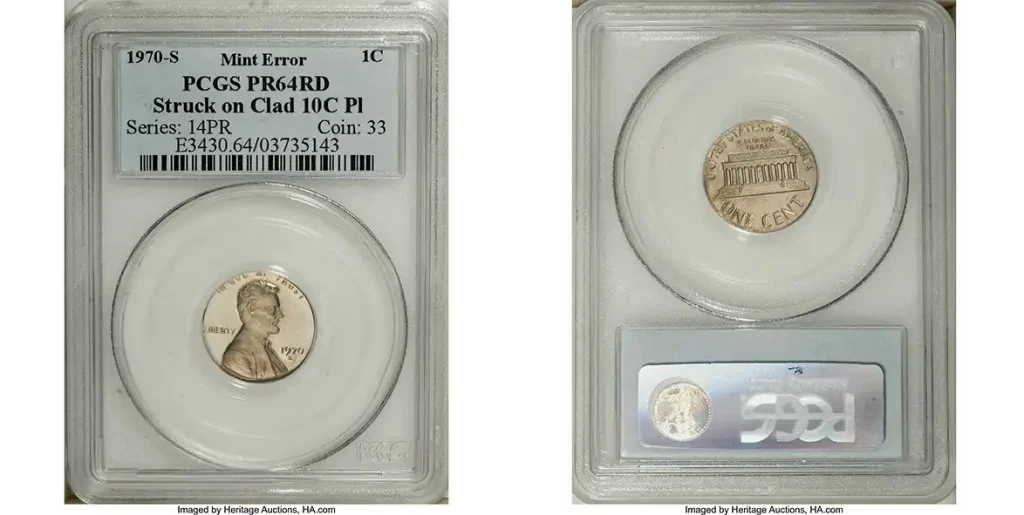
Grading Tips & Preservation
Even the rarest coin can lose most of its value if it’s heavily worn, scratched, or cleaned improperly. Condition—known in the coin world as grade—can increase a penny’s value exponentially.
Grading scale basics (simplified):
- Good (G) – Heavily worn, details faded
- Fine (F) – Moderate wear but all major features visible
- Extremely Fine (XF) – Light wear on high points
- About Uncirculated (AU) – Slight trace of wear
- Mint State (MS-60 to MS-70) – No wear; uncirculated condition
Preservation tips:
- Never clean a coin. Even gentle cleaning removes the original surface (patina) and reduces value dramatically.
- Use gloves or hold coins by the edge to avoid fingerprints or oil damage.
- Store coins in holders, flips, or capsules in a dry, temperature-controlled environment.
- For high-value coins, consider sending them to PCGS or NGC for professional grading and encapsulation.
Final Advice
To identify a valuable penny:
- Check the date and mint mark against key lists.
- Look closely for mint errors using magnification.
- Evaluate its condition and handle it carefully.
- Use reference tools—books, apps like Coin ID Scanner, or professionals—for verification.
Even a single overlooked penny in a box of old coins could be a five- or six-figure discovery from the list of valuable pennies to look for.
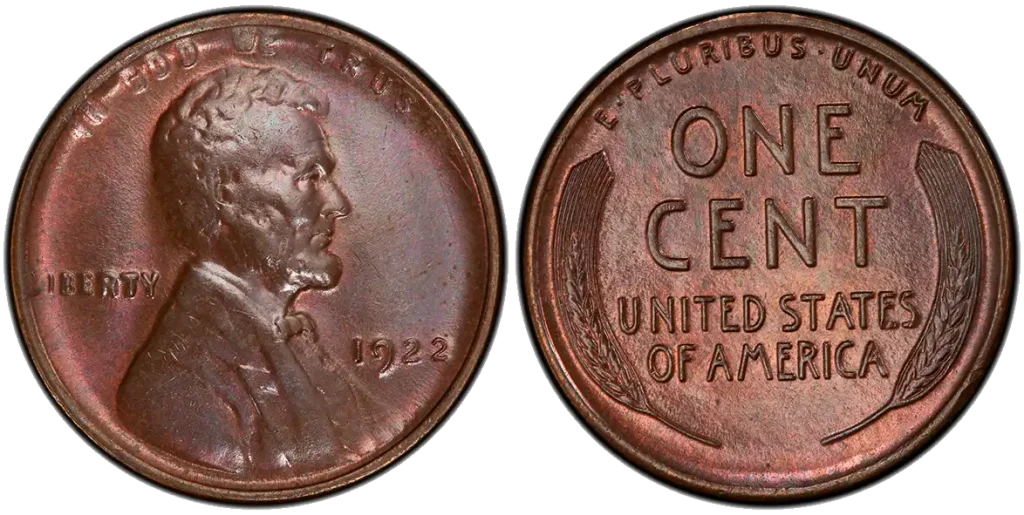
FAQs
How much is a 1943 copper penny worth?
A real 1943 copper (bronze) penny is worth anywhere from $250,000 to over $1,000,000, depending on condition and mint mark.
Coins struck in Philadelphia (no mint mark), Denver (D), or San Francisco (S) all exist, but the 1943-D bronze penny is the rarest, with only one known. Due to widespread fakes, you should always have a 1943 copper penny authenticated by PCGS or NGC before any appraisal or sale.
Are all 1909-S VDB pennies valuable?
Yes—every authentic 1909-S VDB penny is considered valuable. With only 484,000 produced, it’s one of the lowest mintage issues of the entire Lincoln series and marks the debut of Victor David Brenner’s iconic design.
Even in heavily circulated condition, it can fetch $500 to $1,000+, while uncirculated examples in MS-65 RD can sell for $3,000 to over $10,000 depending on quality and certification.
What makes the 1955 doubled die penny special?
The 1955 Doubled Die Obverse features some of the boldest and most easily visible doubling ever released into circulation. The inscriptions “LIBERTY” and “IN GOD WE TRUST” appear clearly doubled to the naked eye.
These coins were mistakenly released in a batch of late-night strikes and entered circulation undetected.
Today, they are one of the most famous U.S. error coins from the valuable pennies list by year. In high grades, they can sell for $10,000 to $50,000, with mint-state examples exceeding $100,000 in rare cases.
How can I tell if my 1944 steel penny is genuine?
Start with a magnet test: a real 1944 steel cent will stick to a magnet, while most fakes will not.
Weigh the coin—an authentic 1944 steel penny weighs about 2.7 grams.
Many “1944 steel” pennies are simply altered 1943s or copper coins plated to appear silvery. A genuine 1944 steel cent is extremely rare, with fewer than 30 confirmed across all mints.
If you suspect yours is real, have it professionally authenticated and graded to verify its authenticity and potential value (which can exceed $100,000).
Where should I sell a rare penny?
If you own a rare or potentially valuable penny, it’s important to sell it through the right channels to get fair market value. Here are your best options:
- Auction houses like Heritage Auctions or Stack’s Bowers for high-value coins.
- Certified coin dealers affiliated with the Professional Numismatists Guild (PNG).
- Online platforms like eBay or GreatCollections (only if you have authentication and grading).
Should I clean my old pennies?
Absolutely not.
Cleaning coins—no matter how gentle—can scratch or dull their surfaces, strip away natural toning, and drastically reduce their value. Even rare pennies can lose 50% to 90% of their worth if cleaned.
Collectors and grading companies highly prefer coins in original, unaltered condition, even if they show age or patina. A cleaned one will barely become a specimen from the list of valuable Lincoln pennies.
What’s the most valuable Lincoln Wheat penny?
The 1943-D Bronze Lincoln Cent holds the title of the most valuable Lincoln Wheat penny ever sold. It’s believed to be unique—only one confirmed example exists—and it sold for $1.7 million.
Other high-value Lincoln Wheat pennies include the 1909-S VDB, 1914-D, 1922 No D, and the famous 1955 Doubled Die. In pristine condition, any of these can sell for tens or hundreds of thousands of dollars.